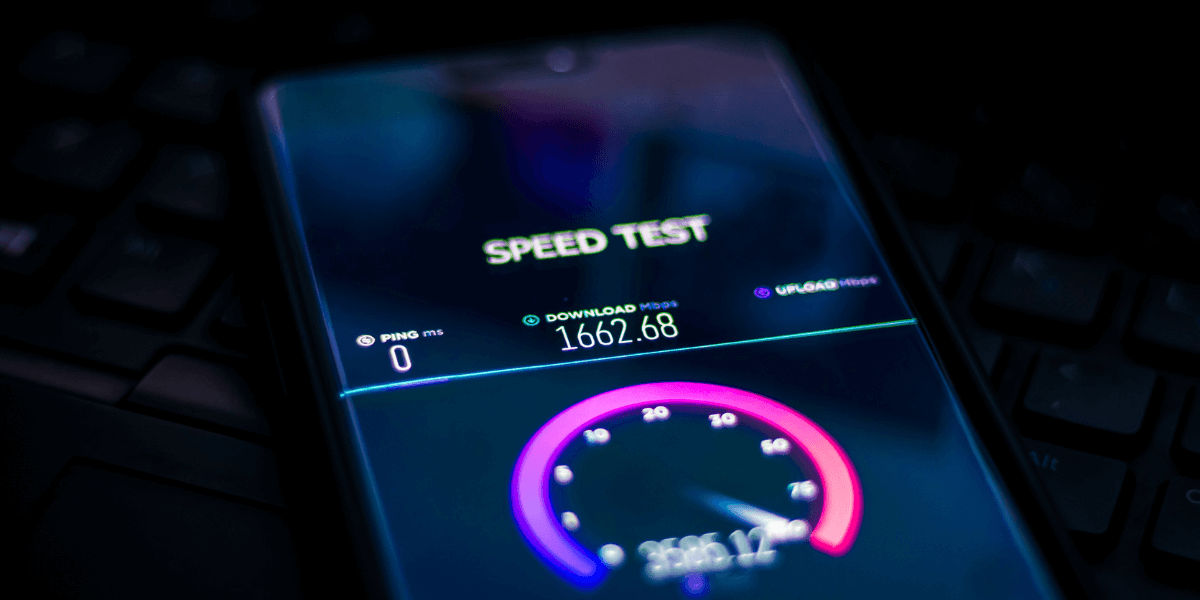Lower your internet bill
61% of people overpay for their internet.
Are you one of them?
Unlock exclusive offers in your area!
Call now
[tel]Enter zip code
1 Star is Poor & 5 Stars is Excellent.
* Required

Written by Caroline Lefelhoc - Pub. Apr 10, 2025 / Updated Mar 25, 2025
Table of Contents
Are you happy with your Internet service?

About the author
When you pay for internet service, you expect to get what you pay for. Unfortunately, the reality of internet speeds often falls short of the promises made in flashy advertisements. Those two little words—"up to"—attached to internet speed claims create a world of difference between what you expect and what you actually receive.
Internet Service Providers (ISPs) have perfected the art of making impressive-sounding claims while delivering less-than-impressive service. Unlike car manufacturers who must display accurate MPG ratings on window stickers (verified by the Department of Transportation), ISPs face much less scrutiny when advertising their speeds.
Take Comcast, for example. In 2016, the National Advertising Division (NAD) called out the company for claiming it offered “the fastest internet in America" and “the fastest, most reliable in-home Wi-Fi." The watchdog group discovered that Comcast based these claims on cherry-picked data, specifically, the top 10 percent of each ISP’s download results from Ookla Speedtest [1]. This selective sampling hardly represented the typical customer experience.
Even more misleading, Comcast’s Wi-Fi claims relied on tests from 2014 and failed to mention that the advertised speeds were only available with dual-band routers. Despite the NAD’s findings, Comcast contested the decision, highlighting the industry’s lack of real accountability.

The ISP advertising trick
The most common trick in the ISP marketing playbook is using “up to" or “as high as" language when describing internet speeds. This wording creates a massive loophole that providers exploit to their advantage.
When AT&T advertises speeds “up to 6 Mbps" or Comcast promises “up to 100 Mbps," they make technically factual statements. After all, any speed below those thresholds—even drastically lower—still falls within the definition of “up to." This clever wordplay leaves consumers with little recourse when their actual speeds consistently fall below what they were led to expect.
This practice is frustratingly common across the industry.
To better understand what you’re getting from your ISP, let’s break down some key terms:
Download speed refers to how quickly your connection can retrieve data from the internet—like loading websites, streaming videos, or downloading files. Most ISPs prioritize advertising high download speeds because they know most consumers care about this.
Upload speed measures how fast you can send data from your device to the internet, such as photos, emails with attachments, or video conferencing. Traditionally, upload speeds are much slower than download speeds, especially with cable and DSL connections. Only fiber internet typically offers symmetrical speeds (equal upload and download).
According to the FCC’s 2024 Measuring Broadband America report, most ISPs deliver median download speeds that meet or exceed their advertised rates [2]. This is particularly true for cable and fiber internet subscribers, who often receive more speed than they pay for.
However, these findings don’t tell the whole story. The testing methodology focuses on median speeds, which means half of the measurements fall below that level. Speed tests typically measure performance under ideal conditions, not accounting for the various factors that affect real-world usage.

Your browsing experience
Even when your ISP delivers the promised speeds to your home, several factors can impact your actual browsing experience:
Just like highway traffic, internet speeds slow down during peak usage hours. When many people in your neighborhood are online simultaneously (typically evenings between 7-11 PM), the shared network resources become strained, leading to slower speeds for everyone.
The advertised speeds apply to wired connections directly to your modem. Once you start using Wi-Fi, speeds inevitably decrease. Older routers, outdated devices, thick walls, and distance from the router contribute to speed degradation.
Sometimes the bottleneck isn’t your connection but the website or service you’re trying to access. If a site’s servers are overloaded or located far from you geographically, your browsing experience will be slower, regardless of your internet speed.
Some ISPs deliberately slow down or “throttle" specific types of traffic (like streaming or gaming) or implement data caps that limit how much high-speed data you can use each month. After reaching these caps, your speeds may be significantly reduced.
ISPs employ various techniques to manage network traffic, collectively known as “network management." While these practices serve legitimate purposes like preventing spam and DDoS attacks, they can also impact your internet experience.
Today, most major ISPs state in their disclosures that they don’t throttle traffic for specific users or to specific sites. However, they often include language that allows for “reasonable network management practices" during periods of congestion.
Data caps, which limit the amount of data you can use each month, have become increasingly common among ISPs. While they can be problematic for heavy internet users, the caps for most broadband connections are relatively generous.
According to a recent OpenVault report, the average US household uses about 580 GB of data per month, up from 534 GB just a year ago [3]. This means most households still fall well below the 1.2 TB caps imposed by some providers.
However, suppose you have multiple internet users in your home, particularly those who engage in data-intensive activities like 4K streaming, video conferencing, or gaming. In that case, you might approach or exceed these limits. In such cases, unlimited data plans may be worth the extra cost.

Regular speed tests are essential to determine whether you’re getting the speeds you pay for. Here’s how to conduct them effectively:
If your speeds consistently fall below what you’re paying for, take these steps:
Ready to take control of your internet experience? Tired of misleading “up to" speeds and hidden fees? It’s time to explore all your options and find the best internet service available where you live.
Don’t settle for disappointing internet service any longer. Enter your zip code now to see which providers offer the most reliable, fastest, and fairly priced service in your area.
[1] Cio.com. “How ISPs get away with shiesty internet speed claims."

About the author
Congratulations, you qualify for deals on internet plans.
Speak with our specialists to access all local discounts and limited time offers in your area.
[tel]61% of people overpay for their internet.
Are you one of them?
Unlock exclusive offers in your area!
Call now
[tel]Enter zip code